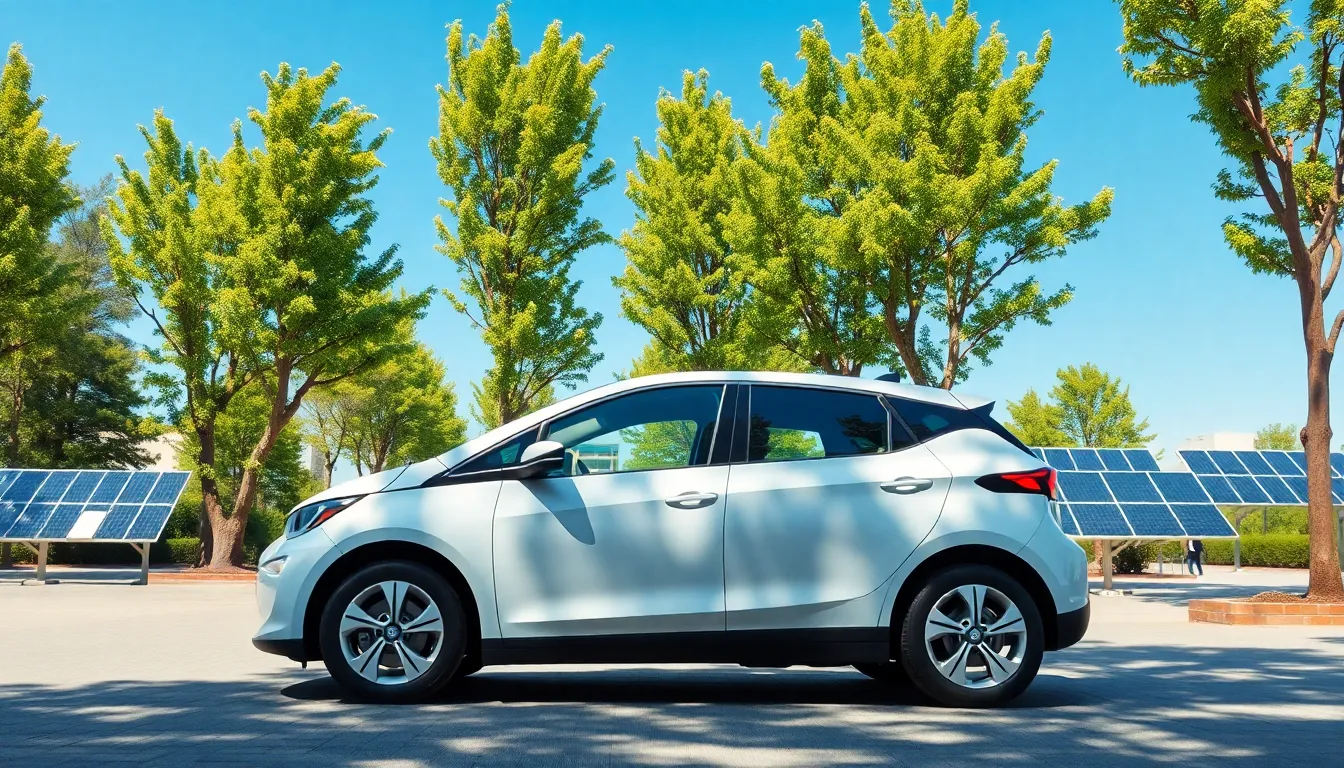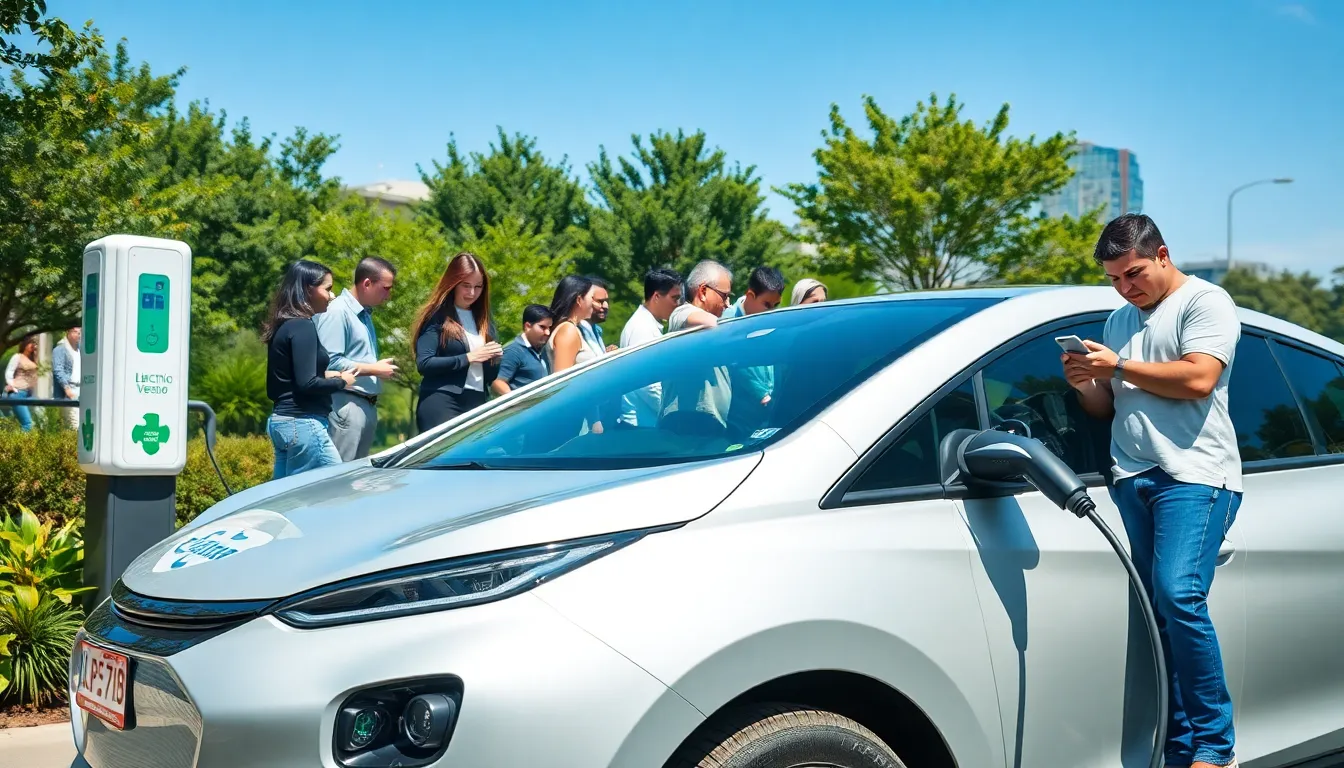Electric vehicles (EVs) are often hailed as the future of transportation, promising a cleaner and greener alternative to traditional gasoline-powered cars. As the world grapples with climate change and rising pollution levels, understanding the environmental impact of EVs becomes crucial. While they produce zero tailpipe emissions, the entire lifecycle of these vehicles—from production to disposal—plays a significant role in their overall ecological footprint.
The production of EV batteries, for instance, involves mining and processing materials that can harm the environment. Additionally, the source of electricity used to charge these vehicles can vary widely, influencing their true sustainability. By exploring these aspects, it becomes clear that while EVs offer a path toward reducing greenhouse gas emissions, a comprehensive view of their environmental impact is essential for making informed choices in the transition to a more sustainable future.
Table of Contents
ToggleOverview of EV Environmental Impact
Electric vehicles (EVs) significantly reduce air pollution due to zero tailpipe emissions. However, the overall environmental impact involves several factors throughout their lifecycle.
Battery Production
- Resource Extraction: Lithium, cobalt, and nickel mining can lead to habitat destruction and water pollution. Global demand for these materials drives unsustainable practices in some regions.
- Manufacturing Emissions: Battery production emits substantial greenhouse gases. Research indicates that manufacturing an EV battery can produce around 150 to 200 kg of CO2 per kWh of capacity.
Energy Source for Charging
- Electricity Mix: The environmental benefit of EVs depends on energy sources used for electricity generation. Renewable sources reduce their carbon footprint, while fossil fuels increase it.
- Grid Emissions: The average emissions for charging EVs vary by region. For instance, areas relying heavily on coal may produce higher emissions per charged vehicle compared to those using wind or solar power.
Lifecycle Assessments
- Comparative Studies: Comprehensive lifecycle assessments reveal that while EVs have higher emissions during production, they often achieve lower emissions over their operational lifetime. A comparison shows that EVs reduce overall greenhouse gas emissions by about 40% compared to gasoline vehicles throughout their lifetime.
- End-of-Life Impacts: Recycling EV batteries can mitigate environmental impacts by recovering valuable materials. Proper end-of-life management reduces landfill waste and encourages circular economy practices.
Understanding these factors highlights the complexity of EVs’ environmental impact. Stakeholders can leverage this knowledge to make informed choices and drive the transition towards sustainable transportation.
Benefits of Electric Vehicles

Electric vehicles (EVs) present significant environmental advantages, primarily through their ability to reduce greenhouse gas emissions and lower air pollution levels.
Reduced Greenhouse Gas Emissions
EVs contribute to a notable decrease in greenhouse gas emissions over their lifecycle. While production emissions surpass those of gasoline vehicles due to battery manufacture, operational emissions drop significantly. Research indicates EVs can reduce overall greenhouse gas emissions by about 40%, depending on the electricity source for charging. Transitioning to renewable energy, such as wind or solar, enhances these benefits. Various studies emphasize the importance of energy mix; utilizing cleaner sources further lessens the carbon footprint. Lifecycle assessments consistently show that, despite the initial production impact, EVs’ long-term emissions are considerably lower than those of traditional combustion-engine vehicles.
Lower Air Pollution
EVs play a vital role in reducing local air pollution. They produce zero tailpipe emissions, significantly minimizing harmful pollutants including nitrogen oxides (NOx) and particulate matter. Regions with high EV adoption experience improved air quality, leading to better public health outcomes. The U.S. Environmental Protection Agency reports that transitioning to electric transportation can substantially reduce health risks associated with urban air pollution. Moreover, as the uptake of EVs increases, reductions in air-borne toxins can provide substantial benefits to vulnerable populations. Overall, the shift towards EVs directly supports initiatives aimed at cleaner, healthier environments.
Challenges of EV Adoption
Electric vehicles (EVs) present several challenges that can impact their widespread adoption. Understanding these obstacles is fundamental for driving the transition toward sustainable transportation.
Battery Production Impact
Battery production plays a significant role in the overall environmental footprint of EVs. Lithium-ion batteries, crucial for most EVs, require the extraction of metals like lithium, cobalt, and nickel. Mining these materials often results in habitat destruction and pollution. A 2020 study indicated that battery production alone can account for up to 20% of an EV’s total lifecycle emissions. Additionally, the energy-intensive manufacturing process contributes further to greenhouse gas emissions. Consequently, improving battery recycling methods and developing sustainable mining practices prove essential for minimizing these impacts.
Charging Infrastructure Concerns
Charging infrastructure poses another challenge to EV adoption. Limited availability of charging stations can discourage potential EV buyers. While public charging networks are expanding, urban areas may still lack sufficient access, leaving drivers concerned about range anxiety. Data from the U.S. Department of Energy shows that there were approximately 113,000 public charging outlets across the U.S. in 2021, but this number needs to grow significantly to meet increasing demand. Furthermore, ensuring that charging stations utilize renewable energy sources is crucial for maximizing the environmental benefits of EVs. Collaboration between governments, private companies, and utility providers is vital for enhancing infrastructure and ensuring widespread adoption.
Life Cycle Assessment of EVs
A comprehensive life cycle assessment (LCA) of electric vehicles (EVs) evaluates environmental impacts from production to disposal. This assessment helps understand the overall ecological footprint of EVs.
Manufacturing Phase
The manufacturing phase significantly influences the environmental impact of EVs. It involves extracting raw materials such as lithium, cobalt, and nickel, which contributes to habitat destruction and pollution. Battery production can generate up to 20% of an EV’s total lifecycle emissions, primarily from energy-intensive processes. According to studies, the carbon footprint of battery manufacturing ranges from 60 to 100 kg CO2 per kWh of battery capacity. Improved mining practices and advanced recycling technologies are necessary to mitigate these impacts.
Usage Phase
The usage phase determines the operational efficiency and emissions of EVs. EVs produce zero tailpipe emissions, which significantly reduces air pollutants like nitrogen oxides and particulate matter. When charged with renewable energy, EVs can cut overall greenhouse gas emissions by about 40% compared to gasoline vehicles. The effectiveness of EVs in reducing emissions largely depends on the electricity mix used for charging, as fossil fuel reliance can diminish benefits. Regions that adopt renewable energy for charging see enhanced reductions in carbon footprints.
End-of-Life Considerations
End-of-life considerations play a crucial role in the sustainability of EVs. Proper recycling and disposal of batteries can minimize environmental harm and promote a circular economy. Current reports indicate that battery recycling can recover up to 95% of lithium and nickel, reducing the need for new raw materials. Effective end-of-life strategies help address potential pollution from discarded batteries and ensure valuable resources are reused, further enhancing the environmental benefits of EVs. Addressing these factors supports a more sustainable lifecycle for electric vehicles.
Future of EV Environmental Impact
Future developments in electric vehicles (EVs) focus on reducing their environmental footprint through innovations in battery technology and supportive policy changes. These advancements promise to enhance sustainability in the EV sector.
Innovations in Battery Technology
Innovations in battery technology significantly influence the environmental impact of EVs. Solid-state batteries, for instance, offer higher energy density and improved safety compared to traditional lithium-ion batteries. These batteries reduce resource consumption due to less reliance on critical minerals like cobalt and nickel. Companies like QuantumScape are working on solid-state solutions that can increase range and reduce charging times.
Additionally, advancements in battery recycling technologies contribute to sustainability. Processes that recover valuable materials can minimize waste and limit the need for new raw material extraction. Closed-loop recycling systems are gaining traction, allowing manufacturers to reuse materials from old batteries in new production. Such strategies can decrease the carbon footprint of battery production by up to 60%, as noted by a study from the International Council on Clean Transportation.
Policy and Regulation Changes
Policy and regulation changes play a pivotal role in shaping the future impact of EVs on the environment. Government incentives for EV adoption, such as tax credits and rebates, encourage consumers to shift towards electric mobility. According to the U.S. Department of Energy, these incentives have consistently boosted sales and increased EV adoption rates.
Furthermore, regulations aimed at promoting cleaner electricity sources enhance the overall sustainability of EVs. Mandates requiring utilities to increase the share of renewables in their energy mix not only benefit the environment but also lower the operational emissions of EVs. Regulations influencing battery production practices, such as requiring sustainable sourcing of materials, further minimize environmental impacts associated with mining and manufacturing.
Together, innovations in technology and supportive policies are vital for bolstering the environmental benefits of electric vehicles, making them a crucial component of a sustainable transportation future.
Electric vehicles represent a significant step towards a more sustainable transportation future. Their potential to reduce air pollution and greenhouse gas emissions cannot be overstated. However the environmental impact of EVs extends beyond just their operation. The entire lifecycle from battery production to end-of-life management plays a crucial role in determining their overall ecological footprint.
As technology advances and infrastructure improves the benefits of EVs will likely grow. Emphasizing renewable energy sources for charging and enhancing recycling practices are essential for maximizing their positive impact. Stakeholders must remain informed and proactive in addressing challenges to ensure that electric vehicles fulfill their promise of a cleaner and healthier environment for all.



